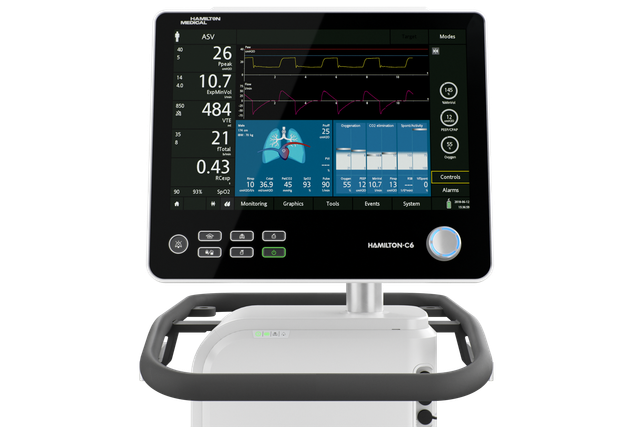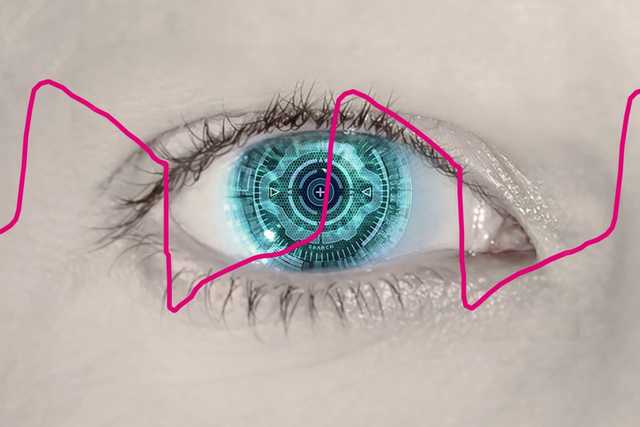
Come si rilevano le asincronie? Un occhio digitale
L'occhio addestrato di un esperto di ventilazione è in grado di rilevare le asincronie esaminando la forma delle curve di flusso e pressione.
Tuttavia, le condizioni del paziente possono cambiare anche nell'arco di un singolo respiro e l'esperto non può restare sempre accanto al letto.
È qui che entra in gioco IntelliSync+. Questa tecnologia si comporta come l'occhio di un esperto per identificare sulla curva i segni dello sforzo (trigger) o del rilassamento (ciclaggio) del paziente.
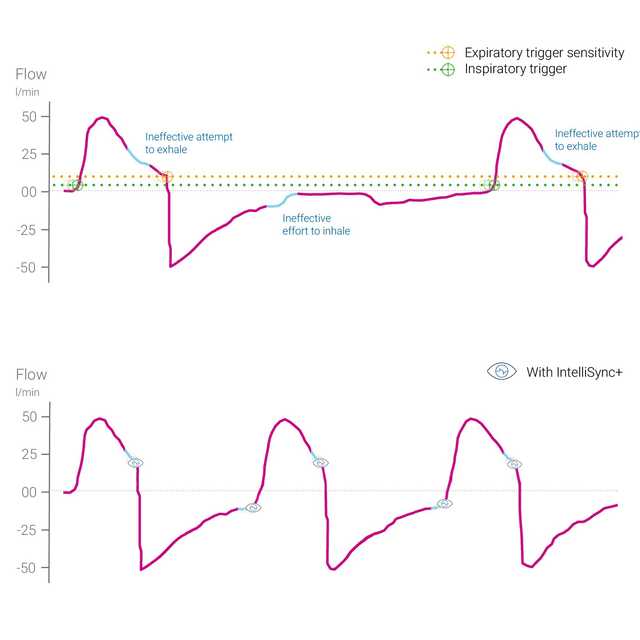
Come funziona? I principi alla base di IntelliSync+
IntelliSync+ analizza costantemente le curve dei segnali, almeno cento volte al secondo. In questo modo, IntelliSync+ è in grado di rilevare immediatamente gli sforzi del paziente e iniziare l'inspirazione e l'espirazione in tempo reale, sostituendo così le convenzionali impostazioni dei trigger per inspirazione ed espirazione.
Per garantire la massima flessibilità, si può attivare IntelliSync+ solo per il trigger inspiratorio, solo per il trigger espiratorio oppure per entrambi.

Le asincronie sono davvero un problema? Uno sguardo alle prove
In circa il 25% del totale dei pazienti ventilati meccanicamente si verifica un numero elevato di asincronie paziente‑ventilatore importanti (
L'analisi della forma delle curve è un metodo affidabile, accurato e riproducibile per valutare l'interazione tra paziente e ventilatore. Automatizzando questo processo è possibile monitorare continuativamente i pazienti ventilati e/o migliorare il trigger e il ciclaggio della respirazione (
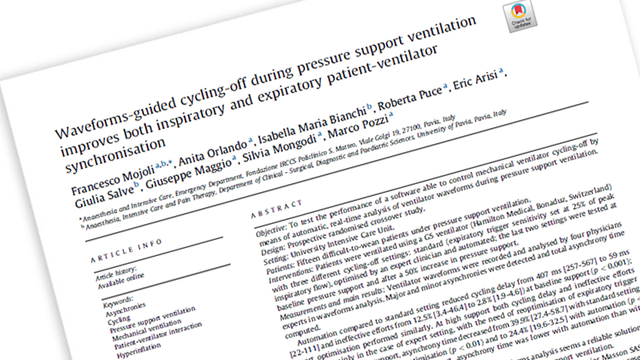
Ciclaggio automatico per una migliore sincronia paziente‑ventilatore
Mojoli F, Orlando A, Bianchi IM, et al.
In un recente studio, il controllo automatico del ciclaggio del ventilatore basato sull'analisi delle curve in tempo reale si è dimostrato un metodo affidabile per il miglioramento della sincronizzazione nei pazienti sottoposti a ventilazione meccanica.
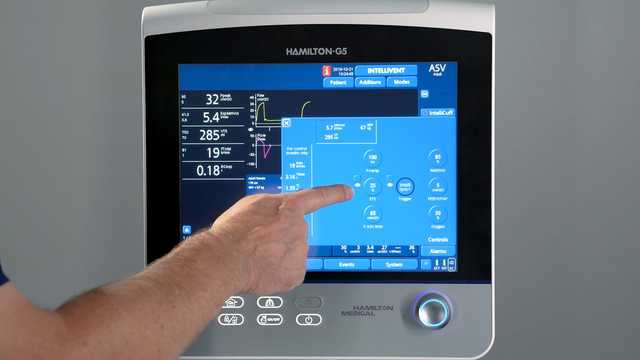
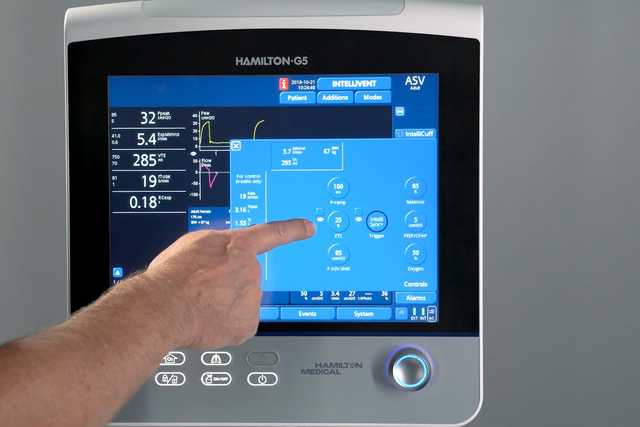
Come si usa? Configurazione e utilizzo di IntelliSync+
IntelliSync+ è un metodo assolutamente non invasivo che non richiede alcun hardware o accessorio aggiuntivo. Basta attivare l'opzione corrispondente sul ventilatore per utilizzarlo nelle modalità di ventilazione non invasive o invasive, su pazienti adulti e pediatrici.
Poiché IntelliSync+ può essere combinato anche con i trigger convenzionali, si può scegliere di utilizzare IntelliSync+ per l'inspirazione, l'espirazione o entrambe.

Buono a sapersi! Risorse per la formazione su IntelliSync+

Imparare a notare le più comuni asincronie: scheda di riferimento gratuita
La nostra scheda di riferimento sulle asincronie fornisce una panoramica sui tipi più comuni di asincronie, sulle loro cause e su come individuarle.
Disponibilità
IntelliSync+ è disponibile come opzione sui ventilatori HAMILTON‑C6 e HAMILTON‑G5, è invece una funzione standard sul ventilatore HAMILTON‑S1.
Bibliografia
- 1. Thille AW, Rodriguez P, Cabello B, Lellouche F, Brochard L. Patient‑ventilator asynchrony during assisted mechanical ventilation. Intensive Care Med. 2006;32(10):1515‑1522. doi:10.1007/s00134‑006‑0301‑8
- 2. Tassaux D, Gainnier M, Battisti A, Jolliet P. Impact of expiratory trigger setting on delayed cycling and inspiratory muscle workload. Am J Respir Crit Care Med. 2005;172(10):1283‑1289. doi:10.1164/rccm.200407‑880OC
- 3. Blanch L, Villagra A, Sales B, et al. Asynchronies during mechanical ventilation are associated with mortality. Intensive Care Med. 2015;41(4):633‑641. doi:10.1007/s00134‑015‑3692‑6
- 4. Mojoli F, Iotti GA, Torriglia F, et al. In vivo calibration of esophageal pressure in the mechanically ventilated patient makes measurements reliable. Crit Care. 2016;20:98. Published 2016 Apr 11. doi:10.1186/s13054‑016‑1278‑5


